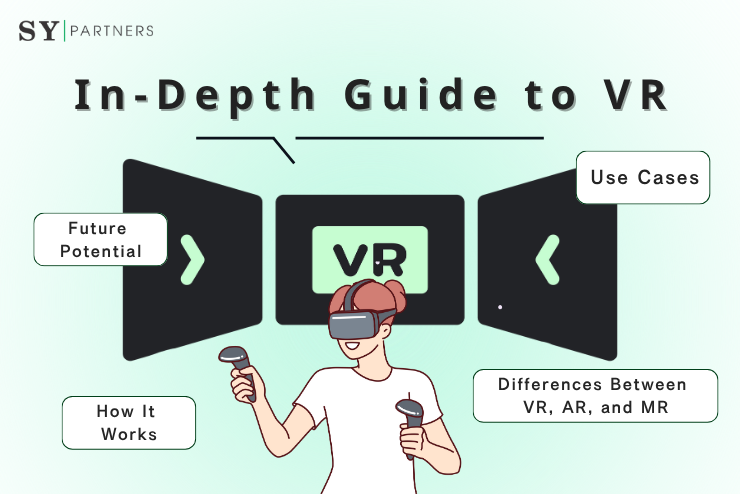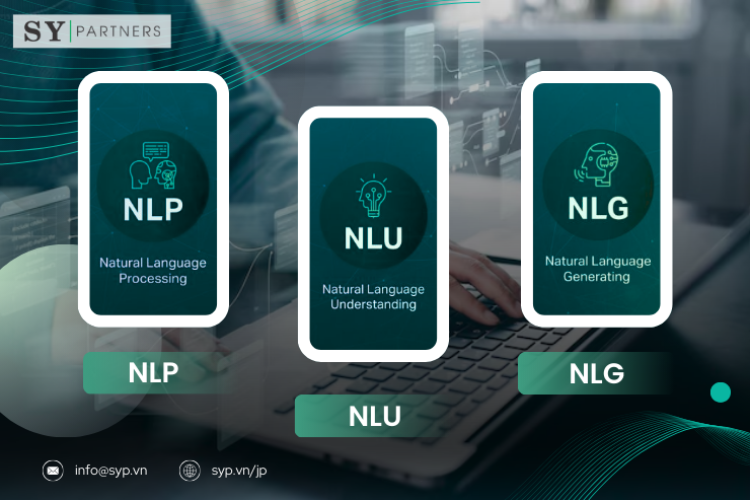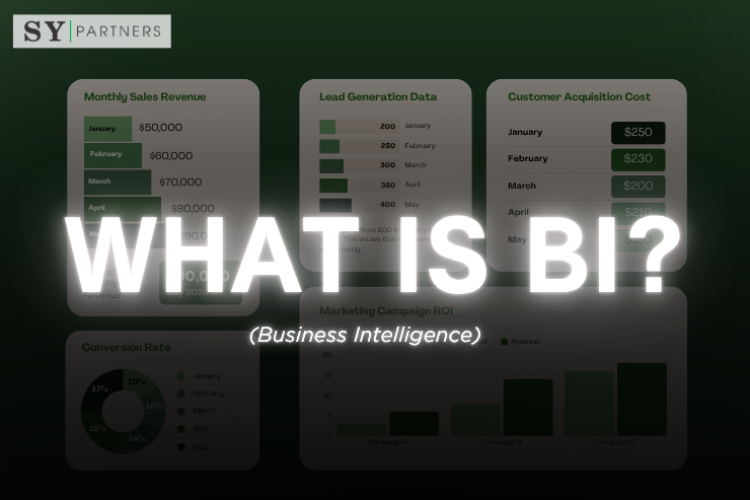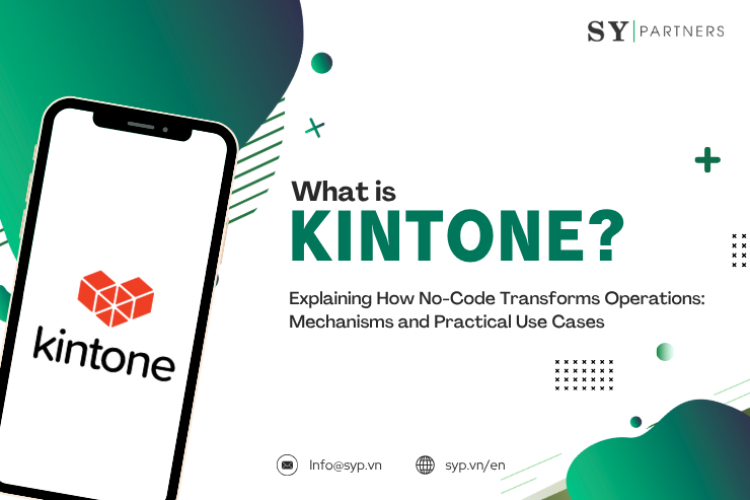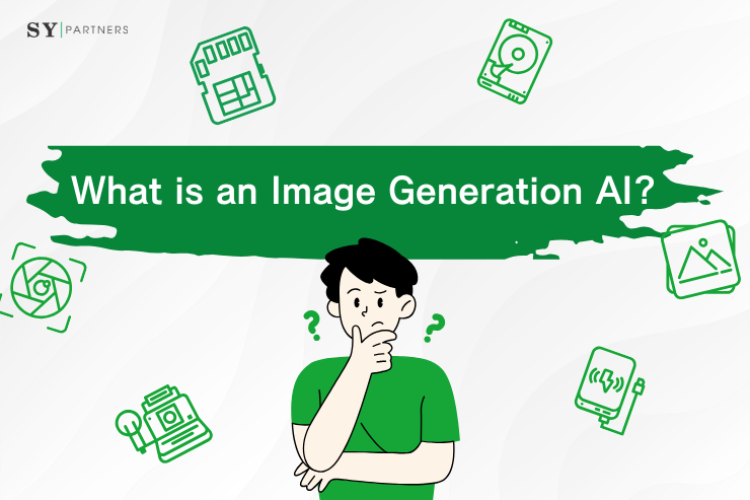What Is VR? Mechanisms for Experiencing Virtual Worlds, Use-Case Examples, and Future Prospects
Virtual Reality (VR) is a technology that allows people to experience computer-generated virtual spaces as though they were real. By wearing VR goggles, users are immersed in a 360-degree world. Combining visual, auditory, and tactile feedback makes it possible to enjoy experiences that would be difficult—or even impossible—in the real world. As of 2025, VR is revolutionizing not only gaming but also medicine, education, tourism, real estate, and many other fields.
Rapid technological advances mean anyone can now try VR with ease, and the market is expanding. With the spread of WebVR and PWAs, VR experiences can even be launched from a web browser, improving accessibility. This article concisely explains the basics of VR, how it works, the differences between VR and AR/MR, real-world applications, and its future potential.
1. What Is VR?
VR (Virtual Reality) is a technology that lets users perceive and experience computer-generated spaces as if they were real. A dedicated VR headset projects 360-degree imagery across the entire field of view, providing a high level of immersion. Adding spatial audio and haptic feedback makes the experience feel even more lifelike. With controllers and sensors, users can move freely and manipulate virtual objects.
VR comes in two main formats:
| Format | Description | Typical Uses |
|---|---|---|
| Viewing-type VR | Users watch 360° or 3D videos; interaction is minimal. | Re-creating historical scenes in education, diagnostic support in medicine |
| Participatory VR | Users walk around the virtual space and interact with objects and environments. | Virtual sightseeing, real-estate walk-throughs, games |
Thanks to the spread of stand-alone headsets and higher display resolutions, VR is now used by individuals and businesses alike. WebVR has also made it possible to experience VR content directly in the browser without specialized hardware. Beyond entertainment, VR is becoming an important technology trend in education, healthcare, industry, and more.
2. How VR Lets Us Experience Virtual Space
VR convinces the brain that a virtual environment is real by integrating technologies for vision, hearing, touch, and body movement. The main mechanisms are explained below.
2.1 Stereoscopic Vision
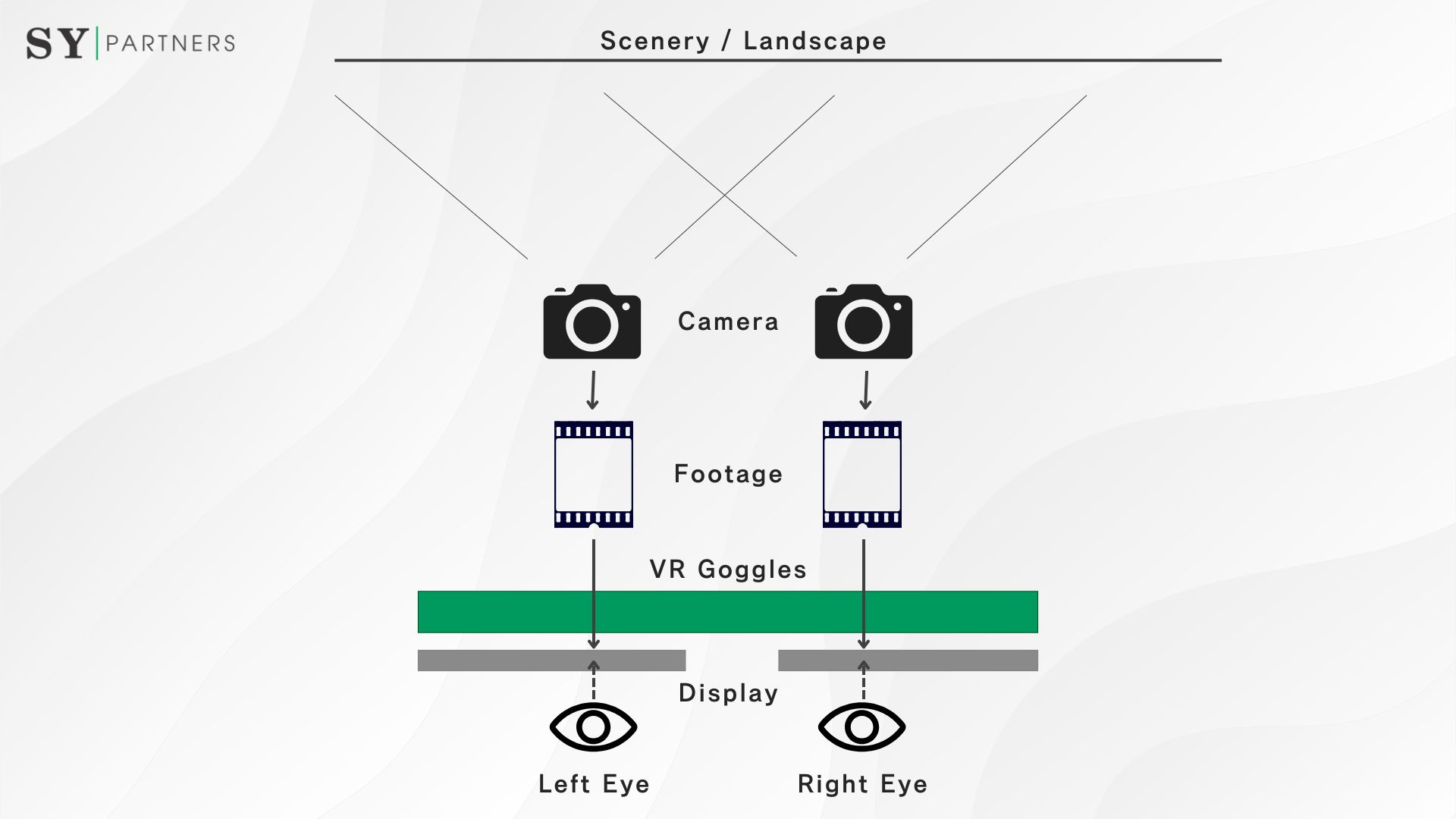
VR uses binocular parallax—the roughly 6 to 7 cm offset between our eyes—to create depth. Two cameras capture the scene, and the images are shown separately to the left and right displays, allowing the brain to perceive a 3D space. Immersion is enhanced by 4K-plus resolutions, wide-angle lenses exceeding 120°, and lenses with adjustable focus for comfortable viewing.
2.2 Touching and Manipulating Objects
In participatory VR, controllers and haptic devices track hand movements so users can grasp or feel virtual objects. Advanced systems simulate hardness and texture; in medical simulations, for example, surgical instruments’ resistance is faithfully reproduced. Better haptic accuracy enables more natural interactions.
2.3 Moving Around
Movement within VR is achieved through thumb-sticks on controllers or full-body tracking. External room sensors or cameras built into the headset capture the user’s position and posture in real time. In tourism VR, for instance, walking motions are mapped to virtual locomotion; with an omnidirectional treadmill, users can traverse vast spaces. Advances in AI-based motion prediction make movement feel smoother and more natural.
2.4 Looking Around
VR headsets include gyroscopes, accelerometers, and infrared cameras to detect head movements precisely. While humans have a field of view of about 120°, VR content can display 180° to 360° scenes. The display updates instantly with every head turn, enabling users to look freely in any direction. Newer models add eye-tracking, making rendering and interaction even more fluid.
2.5 Directional Audio
By combining stereo signals with spatial audio, VR delivers true 3D sound. Different audio is fed to each ear to recreate directionality, and multi-mic recordings generate realistic ambient sound. AI optimizes reflections and environmental audio in real time, deepening immersion.
3. Differences Between VR, AR, MR, SR, XR, 3D, and WebVR/WebXR
Virtual-experience technologies are evolving rapidly, and each acronym covers different concepts. The table below compares VR with related technologies in terms of devices and key features.
| Technology | Required Devices | Main Characteristics |
|---|---|---|
| VR | VR headset | Provides a fully virtual environment rendered in real time by a GPU; offers high immersion. |
| AR | Smartphone, AR glasses | Overlays digital information onto the real world (e.g., 3D objects via mobile apps). |
| MR | MR headset | Blends VR and AR; real and virtual elements interact in real time. |
| SR | Headset | Replaces parts of reality with virtual content; still experimental with few practical uses. |
| XR | Various | Umbrella term covering VR, AR, MR, and SR. |
| 3D | 3D glasses | Displays stereoscopic images on a screen; less immersive and interactive than VR. |
| WebVR / WebXR | Browser, smartphone | Allows VR experiences without dedicated hardware; built with WebGL and JavaScript; quality is more limited. |
Understanding these distinctions helps you select the right technology and design more effective experiences.
4. The Potential of VR
VR is evolving into a foundational technology that can reshape society, far beyond niche applications. Its practical potential in major fields is outlined below.
4.1 VR in Software Development
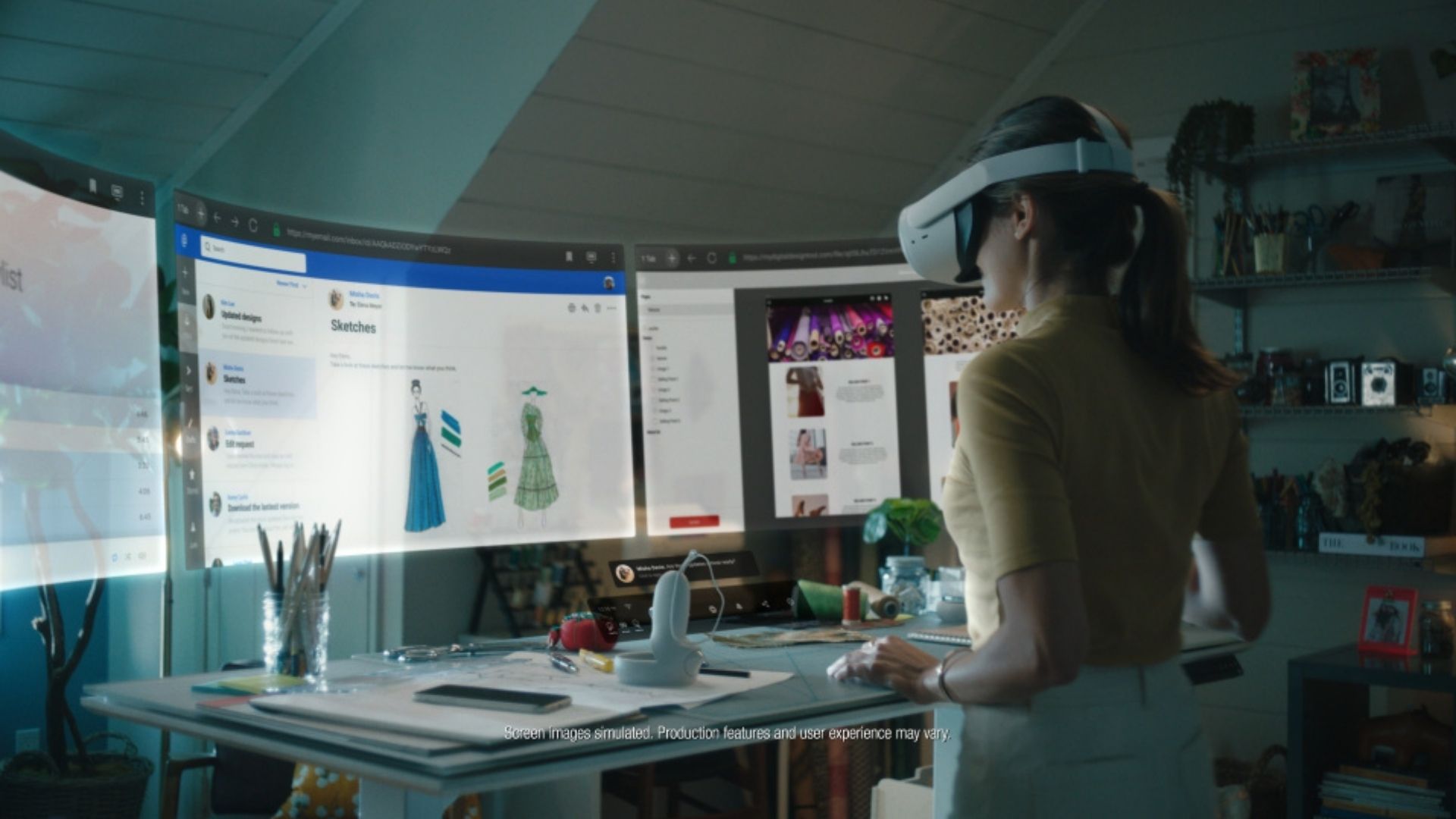
- Next-generation UI/UX hub – Spatial interfaces create entirely new user experiences.
- Real-time 3D rendering breakthroughs – GPU and shader advances enable photorealistic visuals.
- Cross-device deployment – WebXR support points toward platform-agnostic VR experiences.
4.2 Integration With Network Infrastructure
- Cloud VR acceleration – 5G and edge computing deliver high-quality VR with little local processing.
- Optimized real-time communication – Enhanced UDP/WebRTC protocols enable lag-free VR meetings and events.
- QoS-based service design – Seamless integration of video, audio, and input data will drive enterprise VR services.
4.3 Applications in Healthcare
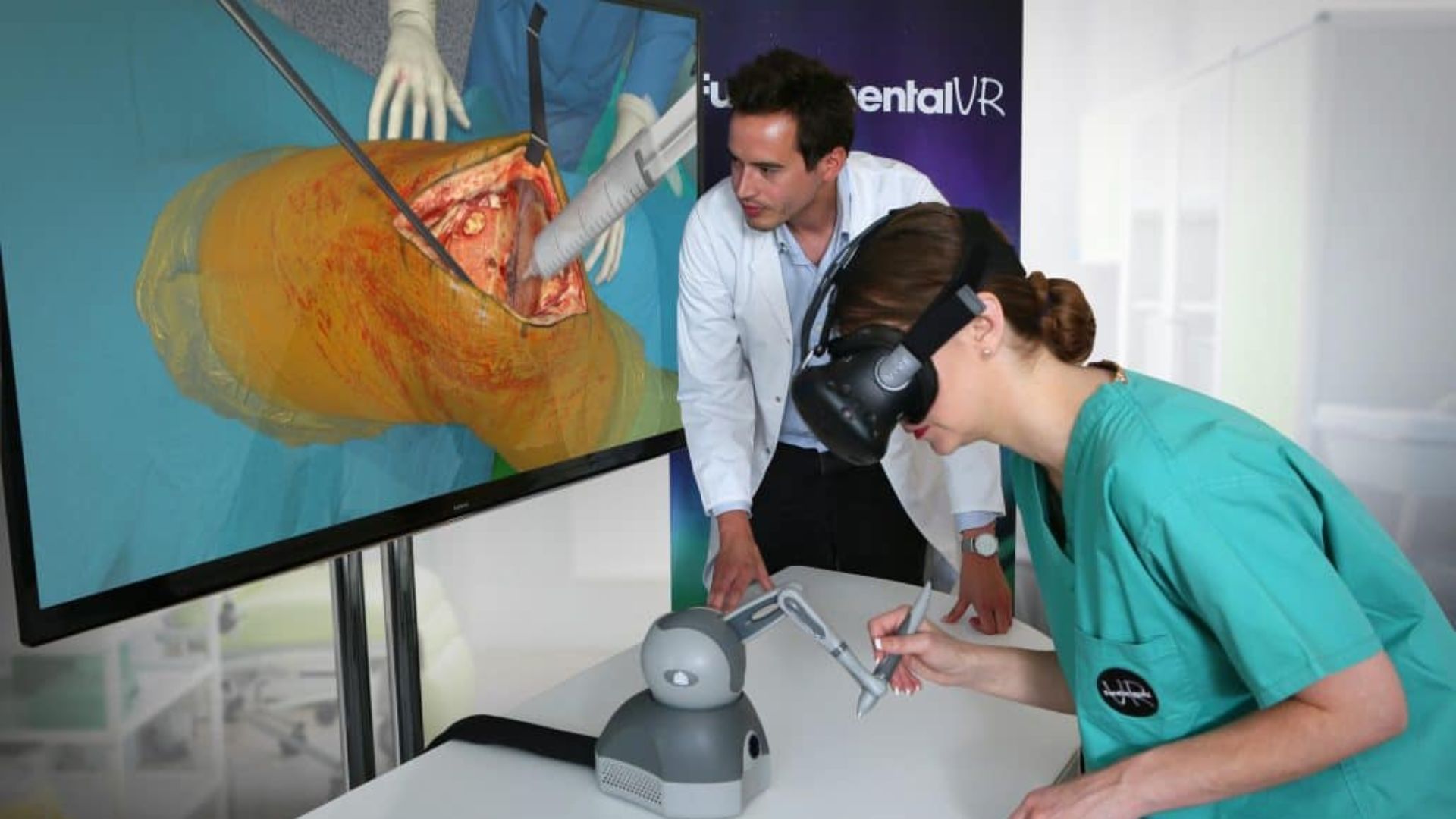
- High-precision surgical training – Safe practice environments using 3D organ models from actual scans.
- Synergy with telemedicine – High-definition VR visuals plus AI diagnostics make remote treatment feasible.
- Mental-health support – Exposure therapy and rehabilitation in VR improve psychological and physical outcomes.
4.4 Applications in Education and Learning
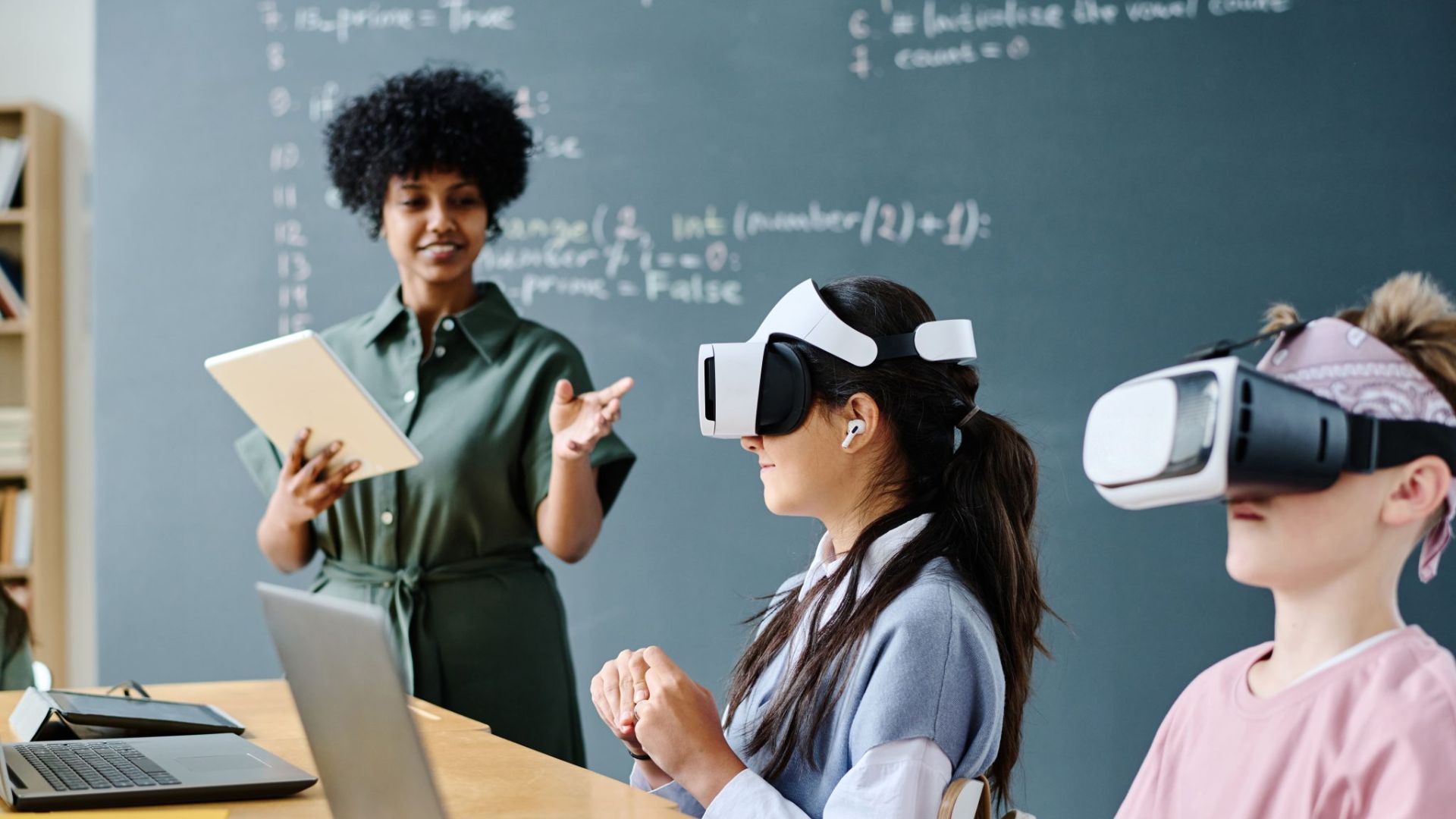
- Standardizing experiential learning – Moving from passive reading to hands-on “embodied learning.”
- Global accessibility – WebXR and PWAs let learners access VR content regardless of hardware, narrowing educational gaps.
- AI-optimized learning – Real-time adjustment of learning experiences based on user behavior data.
4.5 Marketing and Data Utilization
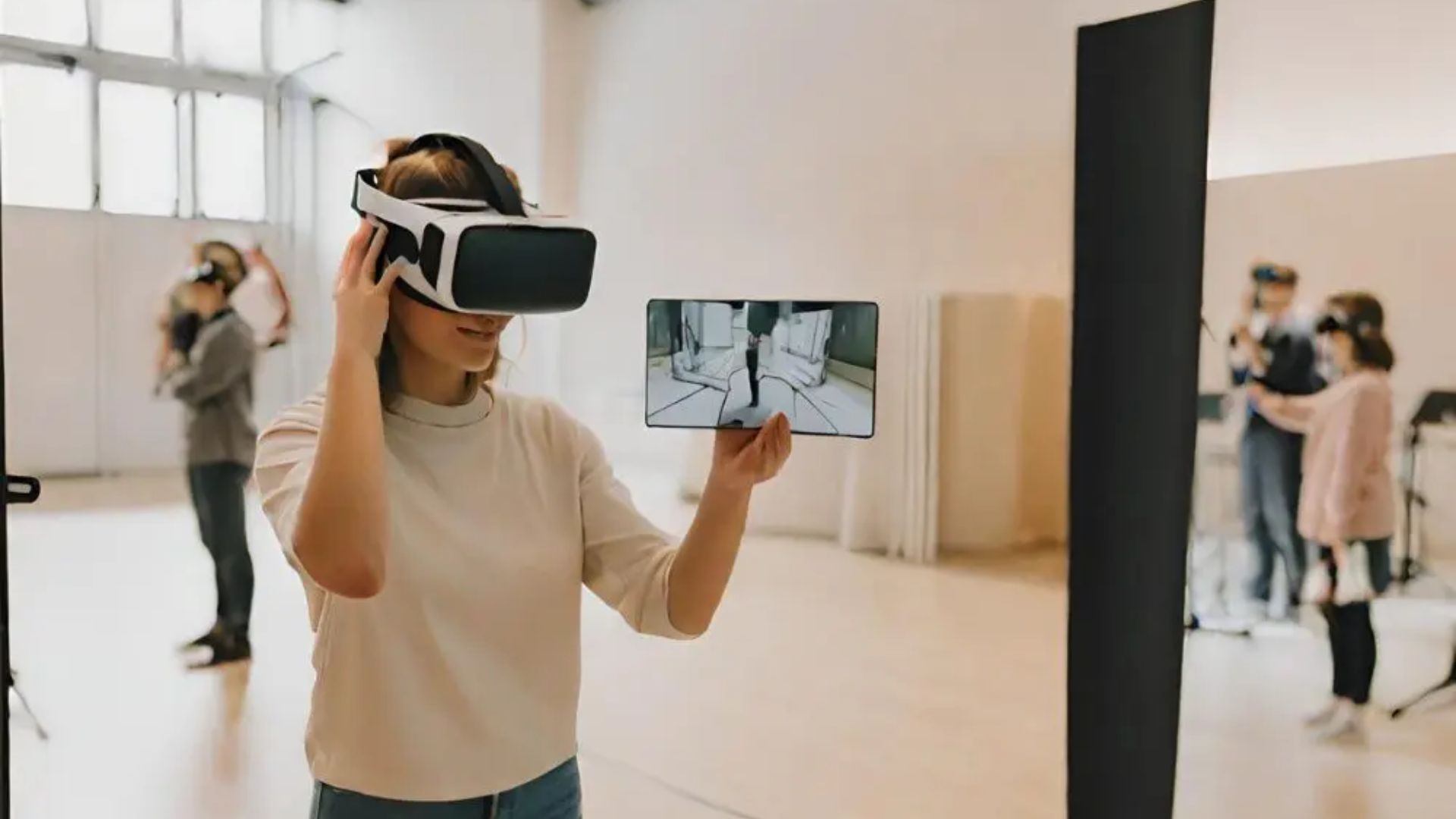
- Immersive brand experiences – Letting customers “experience” products boosts emotional appeal and conversion rates.
- Gaze and behavior analytics – Visualizing user interest and using AI to refine advertising.
- Lightweight WebVR ads – WebGL-based ads deliver engagement beyond traditional formats.
4.6 Collaboration in VR
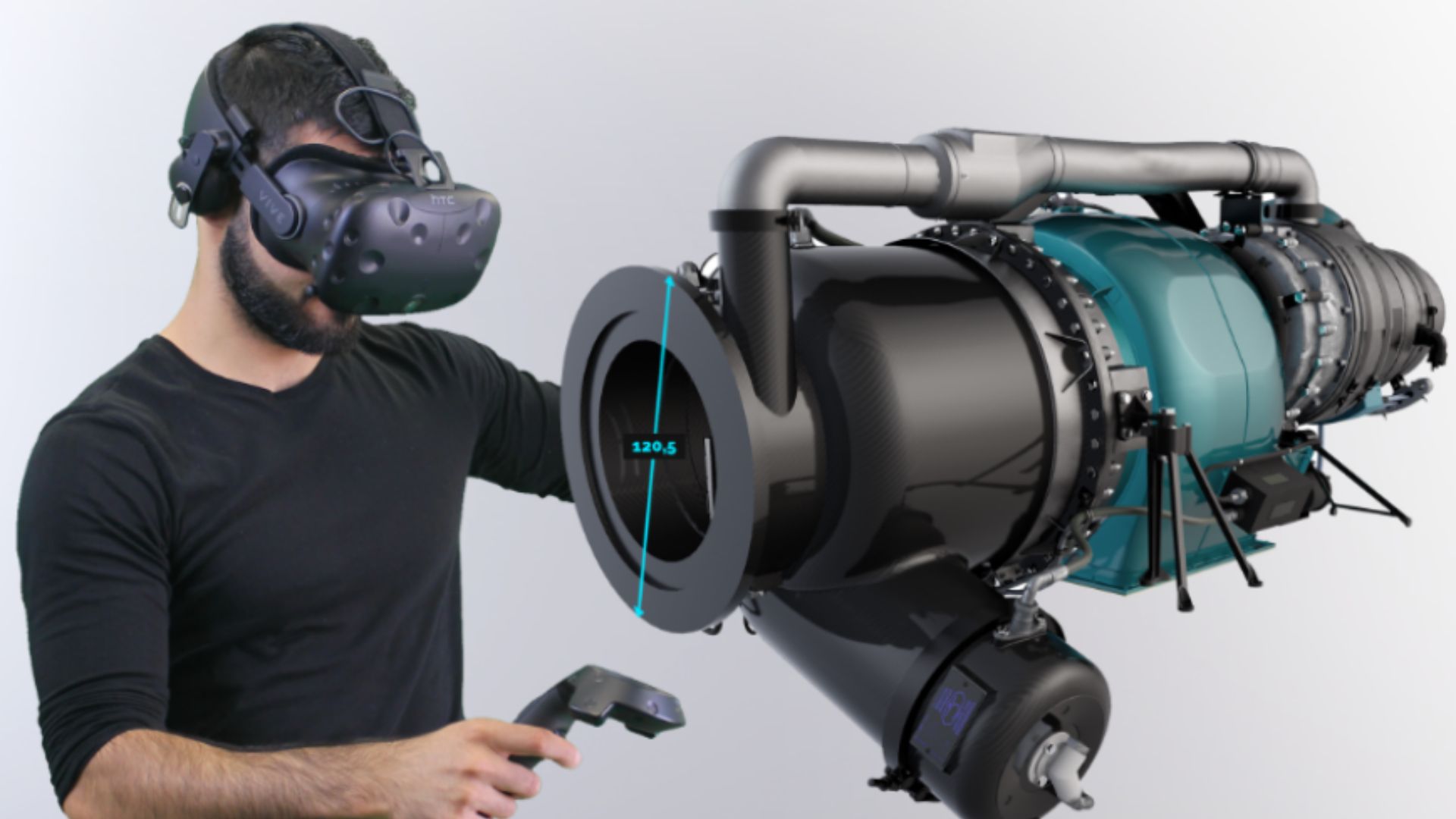
- VR meetings as the norm – Avatar-based shared spaces provide face-to-face-like communication, including eye contact and body language.
- Product-design support – Architects and manufacturers can share and co-edit BIM or 3D models in VR, speeding reviews.
- Digital-twin integration – Real-time replicas of factories or offices enable remote monitoring and control.
4.7 Work-Style Reform
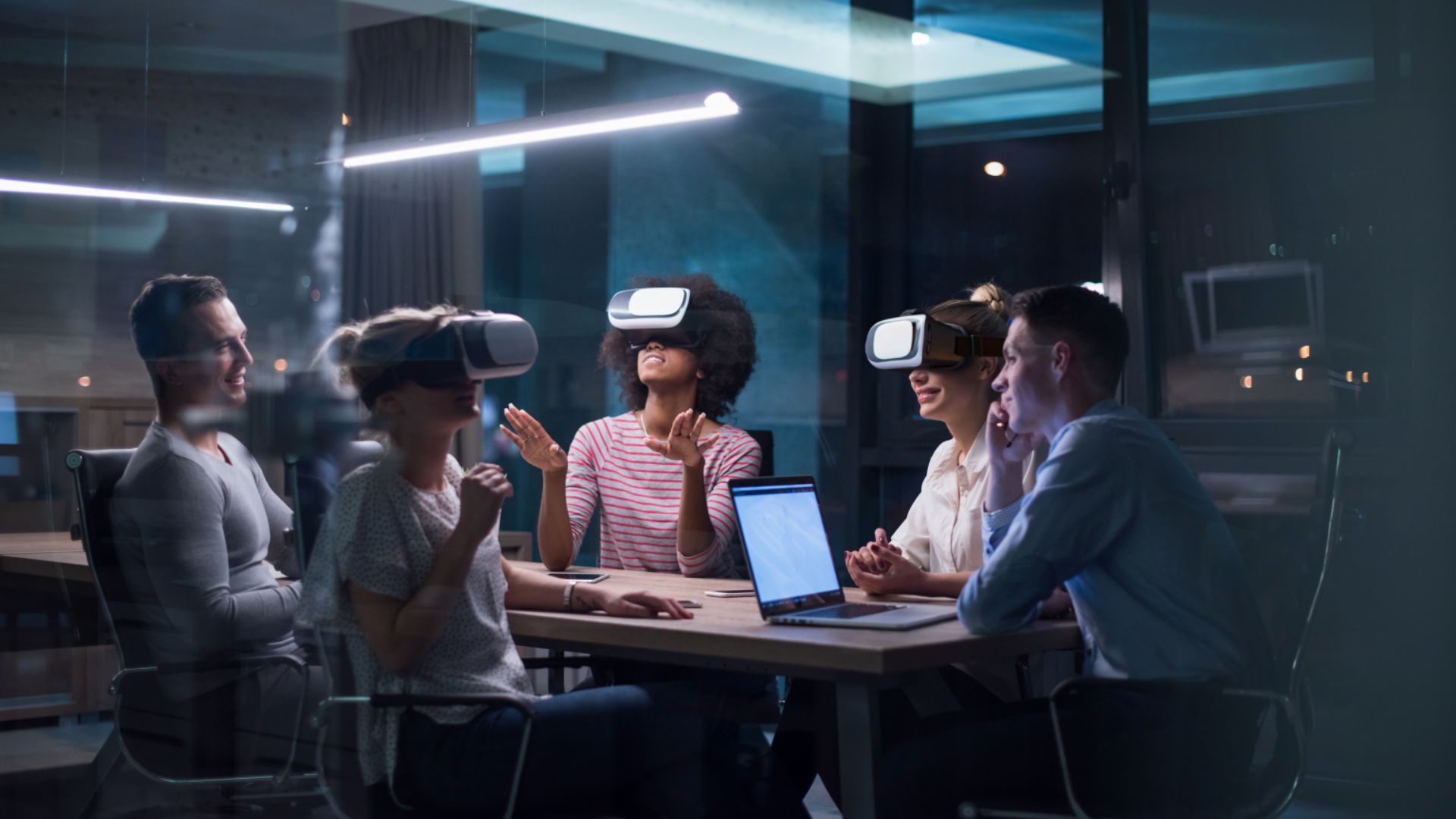
- Evolution of remote work – Immersive virtual offices foster a sense of presence, reducing isolation and information gaps.
- New team-management models – Smooth cross-department collaboration in shared virtual spaces.
- Digital reconstruction of workplaces – Visualize workflows and optimize layouts in virtual replicas.
- Distributed development in the cloud – CI/CD and cloud builds support large-scale, multi-person VR projects.
VR is increasingly seen not just as visual spectacle but as a tool for re-engineering “space,” “senses,” and “interaction” itself. As infrastructure, AI, and cloud technologies converge, VR may become the next everyday information environment.
5. Future Prospects for VR
VR is rapidly proving its practical value across business, education, healthcare, and industry. From 2025 onward, improvements in network infrastructure, device performance, and AI integration are expected to drive growth in both markets and technology. Focusing on Japan, future prospects are analyzed below in four areas: market size, technological trends, use cases, and adoption challenges.
5.1 Market Growth: Accelerating in Japan
Grand View Research forecasts growth from USD 1.095 billion in 2024 to USD 4.65 billion in 2030, reinforcing the high CAGR.
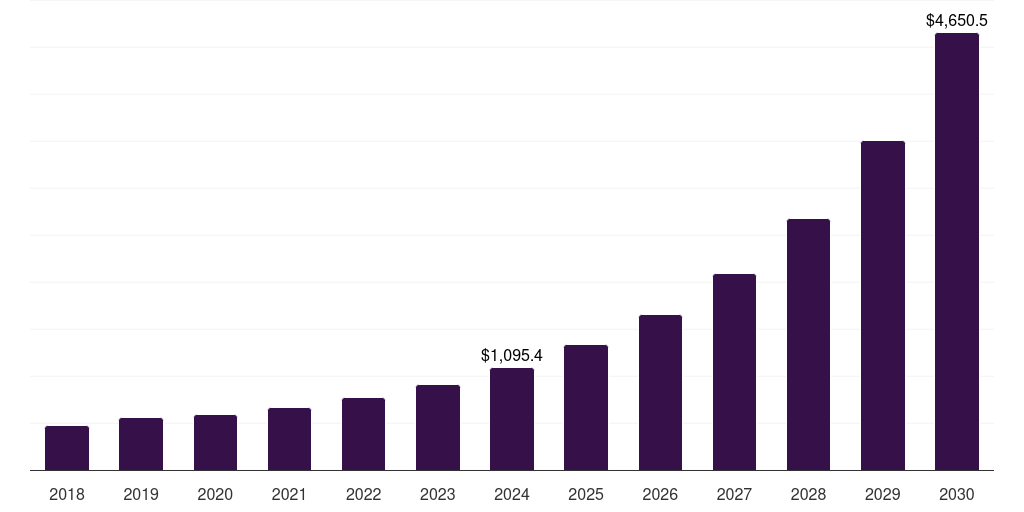
Drivers include improved 5G infrastructure, richer XR content through AI, and wider adoption in education, healthcare, and industry. Overall, steady growth is anticipated, led by enterprise use. VR is moving beyond entertainment to become embedded in practical fields, strongly supporting market expansion.
5.2 Technological Innovation: Four Factors Determining Immersion Quality
VR’s evolution targets comprehensive user-experience improvements, not just better graphics. Four key areas:
- Sensory augmentation – Simulating smell, touch, and body feedback boosts realism, benefiting surgical training and tourism promos.
- 5G & cloud adoption – High-bandwidth, low-latency networks enable cloud rendering of large VR scenes, so lightweight devices can deliver high-quality experiences.
- WebVR & PWA spread – Browser-based VR lowers the entry barrier for companies.
- AI integration – Real-time analysis of user gaze, behavior, and speech enables personalized content, a powerful tool in B2C marketing and education.
These advances make it easier for Japanese companies to move past the old image of VR as “high-cost and complex.”
Summary
VR integrates multiple senses—sight, hearing, touch—to deliver immersive experiences. Higher-resolution displays, haptic devices, eye tracking, and WebVR are accelerating real-world adoption in fields such as education, medicine, tourism, and manufacturing. As 5G, cloud services, and AI converge, VR’s capabilities and business impact will grow, both worldwide and in Japan. Rather than a passing trend, VR is solidifying its role as a core technology transforming learning, work, and marketing.
FAQs
Q1. Why does VR “enhance learning”? Is its effectiveness scientifically proven?
VR boosts learning by combining immersion and active participation, which greatly improve memory retention and comprehension. Traditional methods rely on limited visual and auditory input; VR provides 3D, hands-on experiences that make deeper impressions.
Research at Stanford and MIT shows:
- Knowledge retention up to 30–50 % higher
- Average attention spans 1.5 times longer
- Concept-understanding speed in lab sciences about 40 % faster
Fields that benefit most include chemistry, physics, history, art, and anatomy. Partial adoption is already underway in schools in the U.S. and South Korea.
Q2. What roles and skills are needed to run a VR development project?
VR projects blend diverse technologies—3D space design, user-flow planning, sensor control, video optimization—so a variety of specialists is required:
| Role | Main Skills |
|---|---|
| XR Engineer | Unity/C# or Unreal/C++; real-time rendering, performance tuning |
| 3D Designer / Modeler | Blender, Maya, Substance Painter for spaces, objects, avatars |
| VR-specific UX/UI Designer | Gaze guidance, interaction design for VR environments |
| Sound Engineer | 360° spatial audio design, directionality, reverberation tuning |
| Cloud / Infrastructure Engineer | Streaming VR, multiplayer; WebRTC, Edge AI knowledge |
| Product Manager | Oversees PoC, monetization strategy |
| Domain specialists | e.g., VR Implementation Consultant, Educational VR Content Director |
Q3. What new value emerges when VR and AI are integrated?
AI extends VR beyond shared experiences to optimized, self-evolving ones:
- Personalized learning – AI analyzes gaze and reactions to adapt VR lessons on the fly.
- Deep customer analytics – AI tracks unconscious interest through movement and gaze, enhancing marketing.
- Natural dialogue with NPCs – AI-driven virtual teachers or guides can converse naturally, transforming education and tourism.
- AI-generated spaces – Technologies like GAUDI and NeRF auto-create virtual environments from prompts, slashing content costs.
Q4. What KPIs are used in industries adopting VR?
Unlike traditional apps, VR emphasizes immersion depth and behavior change. Example KPIs:
| Sector | Key KPIs | Notes |
|---|---|---|
| Education | Retention rate, focus time, repetitions, knowledge retention | Combined with AI log analysis for personalized learning |
| Healthcare | Simulation accuracy, misdiagnosis prevention, practice repetitions, pre-op understanding | CT-data integration evaluates VR fidelity |
| Manufacturing | Task-time reduction, error rate, onboarding time, repair-time cutoff | ROI measured against VR training outcomes |
| Marketing | Gaze dwell time, navigation rate, product touches, purchase-intent score | AI analyzes VR session logs |
| Team Collaboration | Virtual-meeting hours, speaking frequency, ideas proposed, task completion rate | Measuring effectiveness of metaverse offices |


 EN
EN JP
JP KR
KR